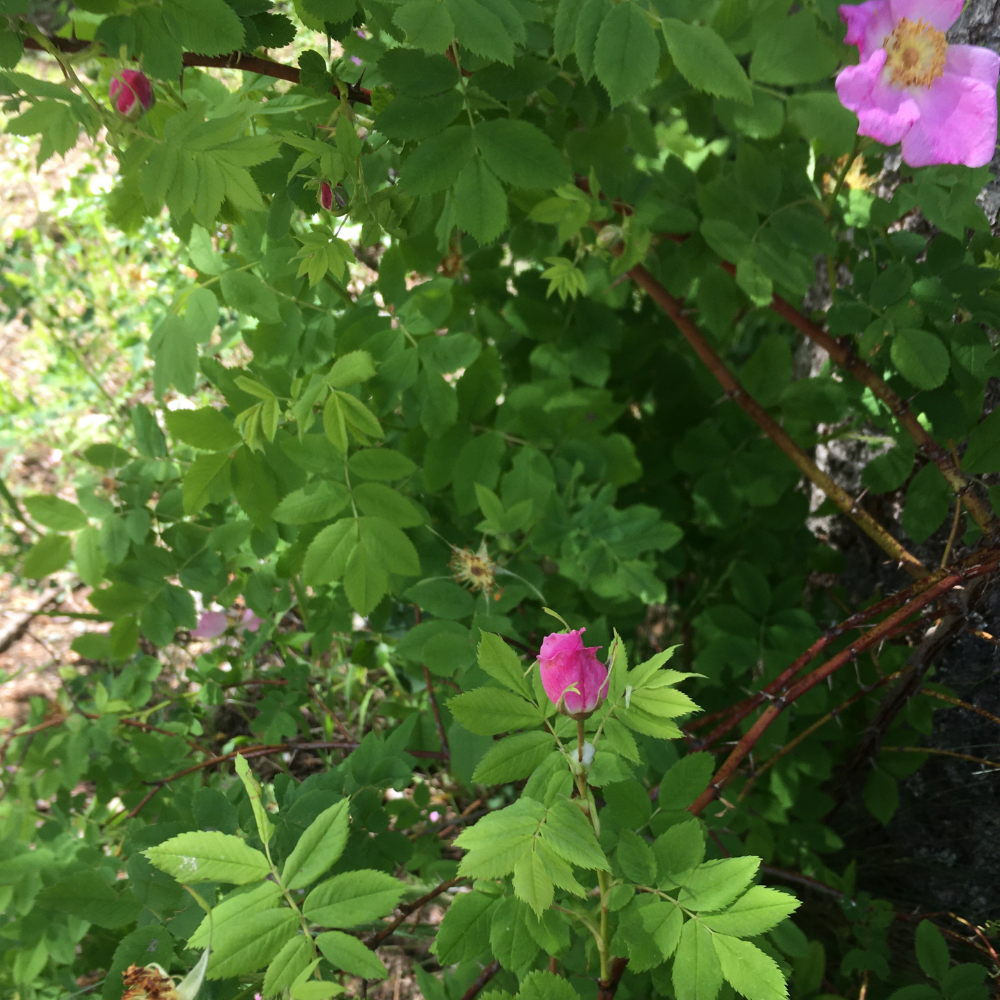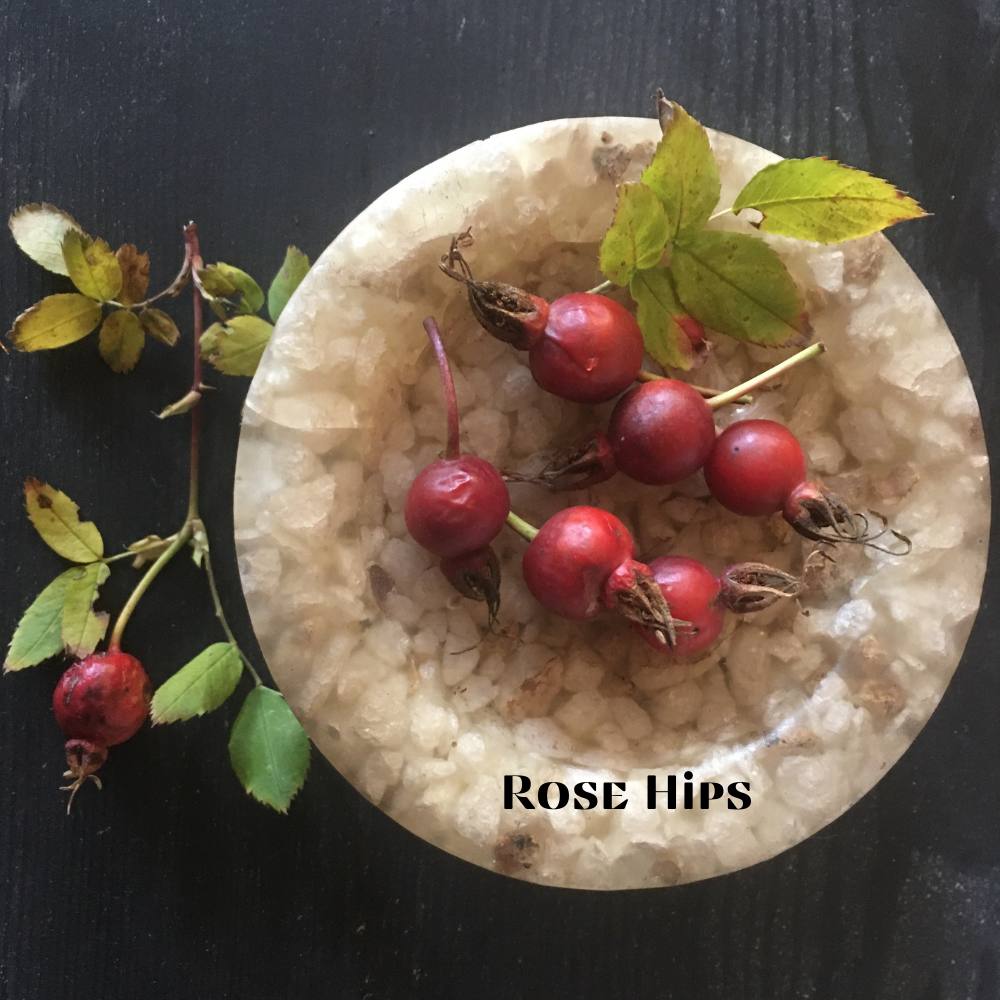Rose Hip Bushes are easily found

If you have ever been in the woods, you have seen the wild prickly rose. In the spring, its flowers are breathtaking. The bushes are not uniform but grow in a wild pattern, which gives a lovely and breath-taking natural appearance. Bushes grow from 3 to 10 feet tall and have thorns on the stems and beautiful white, or pink or a mixture of whites and pinks blossoms. They are uniform with the same pattern, but the distribution is informal and casual.
The bright red bulbs resembling tiny apples arrive in the late summer. Inside the fruit there are numerous seeds nesting within a pulpy matter. The bulb gradually turns bright red or orange and are beautiful against the bright contrast of the green leaves. Some species of rose hips have yellow or black or purple hips.
Rose Hips Have More Vitamin C Than Any Other Natural Source
One rosehip contains approximately 2000mg of vitamin C (newhealthadvisor. org). Oranges have 50% less vitamin C and Blueberries have only about 10 % less vitamin C content. Knowing this fact is of vital importance when it comes to nutrient content. You could eat 2 to 3 oranges, or 1 tiny Rose Hip fruit. For your information, the daily recommended amount is 60 to 95 mg daily (National Institute of Health).
The Rose fruits are edible
You can eat them raw, if you want, but I do not know why you would! You can also make them into a smoothie this way: Remove the seeds and blend the pulp with water or soak them for 24 hours and then boil them in water for ½ hour. It is important to remove the tiny hairs around the seed and it is easiest to do that when they are dry, and you can just sift the fine hairs out.
The rose hips are best preserved as jelly or jam or dried, but there are many ways to use and eat rose hips. My favorite is making juice because it is easy to do. Be sure to add some sweetener or other sweet fruit to make it taste great!
Rose Hips and Gardening fit well together
- The taste of Rose Hips reminds me of something my kids would do in our family garden. They spent much time in the garden, we had a huge one, and would eat whatever they wanted from it. So, I had a garden to feed the family all year, for the kids to eat as much as they wanted, and also for the wildlife. We grew rhubarb, lots of it. And I still don’t know whether my kids ate them raw from the garden because they didn’t want to have to pick and prepare them for dessert or whether they really liked them. But they always told me they liked raw rhubarb. I believed them!
It became a family joke when we were talking to a friend who was asking what the rhubarb tasted like. I told him that the kids loved them raw and before I could warn him, he picked one off and took a bite! The look on his face was priceless! Yes, I did feel a little bad for that, but it was not planned, and it did not harm, and he was too quick for me to warn. But it was quite funny – to my family anyway!
Rose Hip Facts

- Rose Hips fruit grow on the wild prickly rose bushes
- Flowers of wild roses have a beautiful informal array of spring blossoms
- Varieties of wild roses have their own distinctly different blossom colors
- Roses have an abundance of red bulb fruits in the late summer.
- There is 2000 mg of vitamin C in one rosehip
- They are edible raw but have a very bitter taste. (I warned you!)
Other posts you may enjoy:
- 13 Amazing Ways to Use Rose Hips

Pingback: Easy Rose-Hip Recipes - Health Remedies | Living To Giving